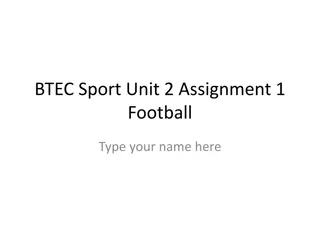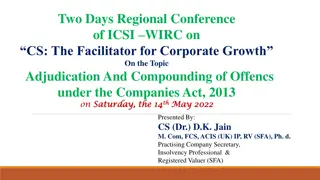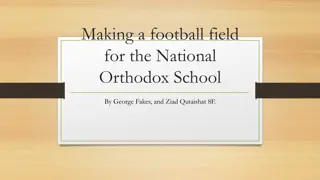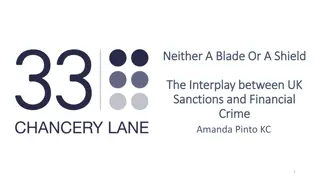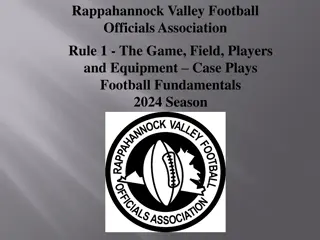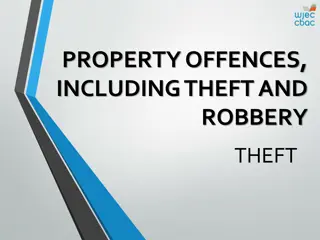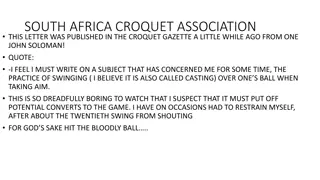Offside in Football: Rules and Offences Explained
Simplified explanation of the offside rule in football, covering offside position criteria, offences, and becoming involved in active play. Learn about what constitutes an offside position, offside offences, and how a player can be penalized for being offside. Discover the meaning of becoming involved in active play and interfering with play or opponents in the context of offside calls.
Download Presentation

Please find below an Image/Link to download the presentation.
The content on the website is provided AS IS for your information and personal use only. It may not be sold, licensed, or shared on other websites without obtaining consent from the author.If you encounter any issues during the download, it is possible that the publisher has removed the file from their server.
You are allowed to download the files provided on this website for personal or commercial use, subject to the condition that they are used lawfully. All files are the property of their respective owners.
The content on the website is provided AS IS for your information and personal use only. It may not be sold, licensed, or shared on other websites without obtaining consent from the author.
E N D
Presentation Transcript
OFFSIDE Simplified
2 components to the offside law Being in an offside position Committing an offside offence
A player is in an offside position if: Offside position any part of the head, body or feet is in the opponents half (excluding the halfway line) and any part of the head, body or feet is nearer to the opponents goal line than both the ball and the second-last opponent (note: not second to last)
It is not an offence to be in an offside position.
Offside position A player is not in an offside position if level with the: second-last opponent (note: not second to last) or last two opponents
What does offside offence mean?
A player in an offside position at the moment the ball is played or touched by a team-mate is only penalized on becoming involved in active play. Offside offence
What does becoming involved in active play mean?
Becoming involved in = active play Interfering with play Interfering with an opponent
Interfering with play = playing or touching a ball passed or touched by a team-mate
Interfering with an = opponent preventing an opponent from playing or being able to play the ball by clearly obstructing the opponent s line of vision or ..
challenging an opponent for the ball or clearly attempting to play a ball which is close when this action impacts on an opponent Interfering with an opponent or making an obvious action which clearly impacts on the ability of an opponent to play the ball
gaining an advantage by playing the ball or interfering with an opponent when it has: What is also considered to be active play? rebounded or been deflected off the goalpost, crossbar, match official or an opponent been deliberately saved by any opponent
There is no offside offence if a player receives the ball directly from: No offside offence a goal kick a throw-in a corner kick
Who is responsible for indicating an offside offence? The Assistant Referee
Who is responsible for penalizing an offside offence? The referee
What is the restart for an offside offence? If an offside offence occurs, the referee awards an indirect free kick (from where?) and uses the appropriate signal.











